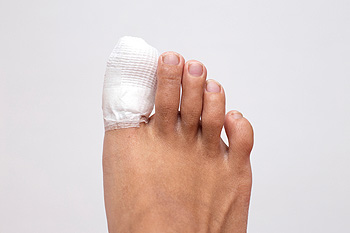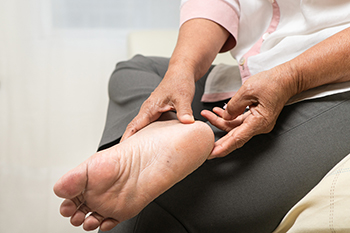Participating in sports is great for maintaining your health and fitness, but can sometimes result in injuries to your feet or ankles. Common sports-related foot and ankle injuries include Achilles tendonitis, ankle sprains, stress fractures, turf toe, and plantar fasciitis.
Achilles tendonitis is a common injury in which the Achilles tendon located at the back of your ankle becomes inflamed due to overuse or biomechanical issues with the feet. Symptoms of Achilles tendonitis include pain in the lower calf, swelling, stiffness, redness, warmth, and reduced strength and range of motion.
Ankle sprains occur when the ligaments in the ankle are overstretched or torn. Depending on the severity of the injury, you may experience symptoms such as localized pain, swelling, and bruising at the site of the sprain, a limited ability to move the affected ankle, and difficulty walking.
Stress fractures are fine cracks that occur in the bones when they can’t bear the load placed on them. These fractures often occur in the foot bones and get worse over time if they are not promptly diagnosed and treated. Symptoms of stress fractures in the feet include tenderness, deep and dull or sharp and localized pain, weakness, swelling, and bruising.
Turf toe is a sprain of the largest joint in the big toe. It can cause symptoms such as pain, swelling, or tenderness that vary in intensity depending on the severity of the injury.
Plantar fasciitis is an inflammation of the ligament that runs along the bottom of the foot. This condition usually causes stabbing heel pains, arch pain, and pain when taking your first steps after a long period of rest.
If you have injured your feet or ankles while playing sports, it is recommended that you see a chiropodist who can diagnose and treat your condition and get you back on your feet.






